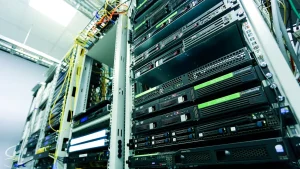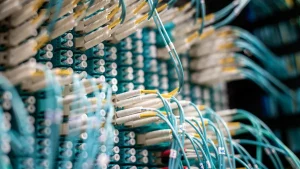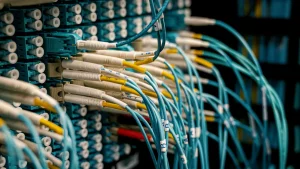
Basic power distribution units (PDUs) deliver essential power to IT equipment. Metered PDUs add crucial power consumption monitoring capabilities. Understanding these distinct PDU types is critical for achieving efficient data center operations. Selecting the appropriate PDU, such as a specialized 19″ cabinet PDU Denmark style, directly impacts operational efficiency and overall cost management.
Key Takeaways
- Basic PDUs deliver power. They do not monitor power use. They are good for small IT spaces.
- Metered PDUs deliver power. They also monitor power use. This helps manage power better.
- Metered PDUs show real-time power data. This helps prevent power problems. It also helps save energy.
- Metered PDUs allow remote access. You can check power from anywhere. This makes managing power easier.
- Metered PDUs help plan for future growth. They show how much power you use. This helps you add more equipment.
- Choosing a PDU depends on your needs. Consider your budget. Think about how much power monitoring you need.
- Metered PDUs help data centers save money. They improve efficiency. They also reduce risks.
Understanding Basic PDU Functionality
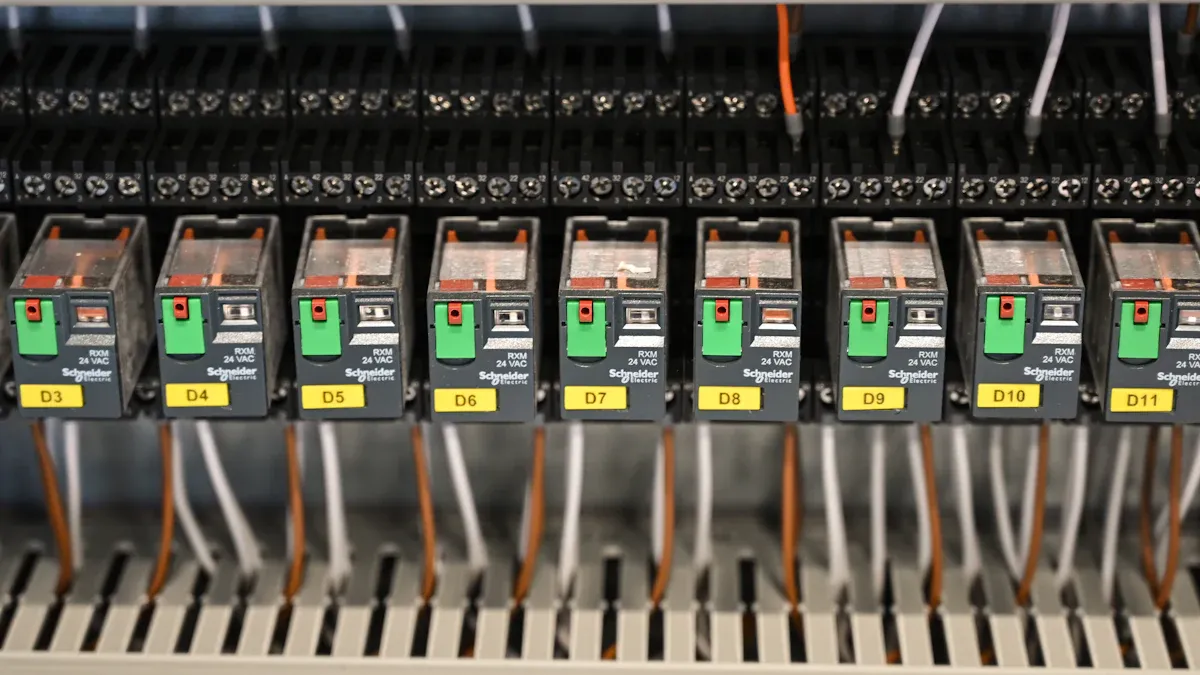
Core Power Distribution for Your PDU
Basic power distribution units (PDUs) form the backbone of power delivery within IT environments. They provide a reliable means of distributing power from a single source to multiple devices. This fundamental function ensures all connected equipment receives the necessary electrical supply.
Reliable Power Delivery
A basic PDU primarily focuses on delivering consistent and stable power. It acts as a robust power strip, supplying power to server racks and other IT infrastructure. Essential components facilitate this core function. For instance, the main output serves as the primary power distributor to connected devices, while AC inlets and outlets provide connections for detachable AC line cords and additional power access. Main circuit breakers manage the PDU’s power source, ensuring safety and control.
Simple Rack Integration
Integrating a basic PDU into a server rack is straightforward. Its design prioritizes ease of installation, allowing quick deployment without complex configurations. Operators simply mount the unit and connect their equipment. This plug-and-play approach minimizes setup time and effort.
Key Characteristics of a Basic PDU
Basic PDUs possess distinct characteristics that make them suitable for specific applications. They do not offer advanced features like monitoring or remote management, focusing instead on their primary role.
Cost-Effectiveness
One significant advantage of basic PDUs is their cost-effectiveness. Their simpler design and lack of advanced features translate into a lower initial investment. This makes them an attractive option for organizations with tight budgets.
Plug-and-Play Simplicity
Basic PDUs excel in their simplicity. Users can easily install and operate these units without specialized training or extensive technical knowledge. This characteristic reduces deployment complexity and ongoing management overhead.
Ideal Use Cases for Basic PDU
Organizations deploy basic PDUs in environments where advanced power management features are not a priority or where budget constraints dictate simpler solutions.
Small IT Closets
Basic PDUs are ideally suited for small IT closets. These environments often house a limited number of devices and do not require granular power monitoring or remote control. Their simplicity perfectly matches the needs of such setups.
Non-Critical Infrastructure
For non-critical infrastructure, basic PDUs offer a practical solution. Equipment in these areas, such as development servers or less vital network switches, can operate effectively without the need for advanced power analytics.
Budget-Constrained Environments
Many offices, network closets, and small server rooms operate under strict budget limitations. Basic PDUs provide an economical way to distribute power efficiently in these settings, allowing organizations to allocate resources to other critical areas.
Limitations of a Basic PDU
Despite their simplicity and cost-effectiveness, basic PDUs present several limitations. These drawbacks can significantly impact operational efficiency and risk management within an IT environment. Organizations must understand these constraints before deployment.
No Power Monitoring Capabilities
Basic PDUs fundamentally lack any power monitoring features. This absence creates significant operational risks. Operators cannot predict or prevent power quality problems, which often leads to equipment malfunction and unexpected downtime. The lack of real-time monitoring also increases the risk of unexpected disruptions and potential IT equipment damage. Without power usage analytics, basic PDUs hinder energy optimization efforts. This absence of insight into energy consumption leads to higher operational costs and reduced efficiency. It also prevents the identification of high-energy-consuming devices, limiting informed decisions on resource allocation. Furthermore, basic PDUs cannot track critical environmental factors like temperature, humidity, or airflow. This inability increases the risk of equipment damage. Identifying and addressing issues such as overheating or excessive humidity becomes difficult without real-time data. Organizations must rely on external monitoring tools, which can be costly and time-consuming.
Manual Load Balancing Required
The absence of monitoring capabilities in basic PDUs necessitates manual load balancing. IT staff must physically check power draws and manually redistribute equipment to prevent overloads. This process is labor-intensive and prone to human error. Incorrect manual balancing can lead to tripped circuit breakers, causing sudden power outages for connected devices. Such manual intervention also increases the complexity of managing power distribution, especially in growing or dynamic IT environments.
Reactive Problem Solving
Basic PDUs promote a reactive approach to problem-solving. Without real-time data or alerts, issues like power fluctuations or impending overloads remain undetected until they cause a failure. This means IT teams only respond after an incident occurs, leading to increased downtime and potential data loss. The table below highlights key differences, showing why basic PDUs are not ideal for modern data centers.
| Feature | Basic PDUs |
|---|---|
| Real-time Monitoring | No |
| Remote Access | No |
| Alerts for Issues | No |
| Ideal for Modern Data Centers | No |
| Scalability for Advanced Needs | Limited |
This reactive stance contrasts sharply with the proactive management capabilities offered by more advanced power distribution solutions. It results in increased complexity and potential for oversight, as external meters are required for continuous surveillance.
Exploring Metered PDU Capabilities
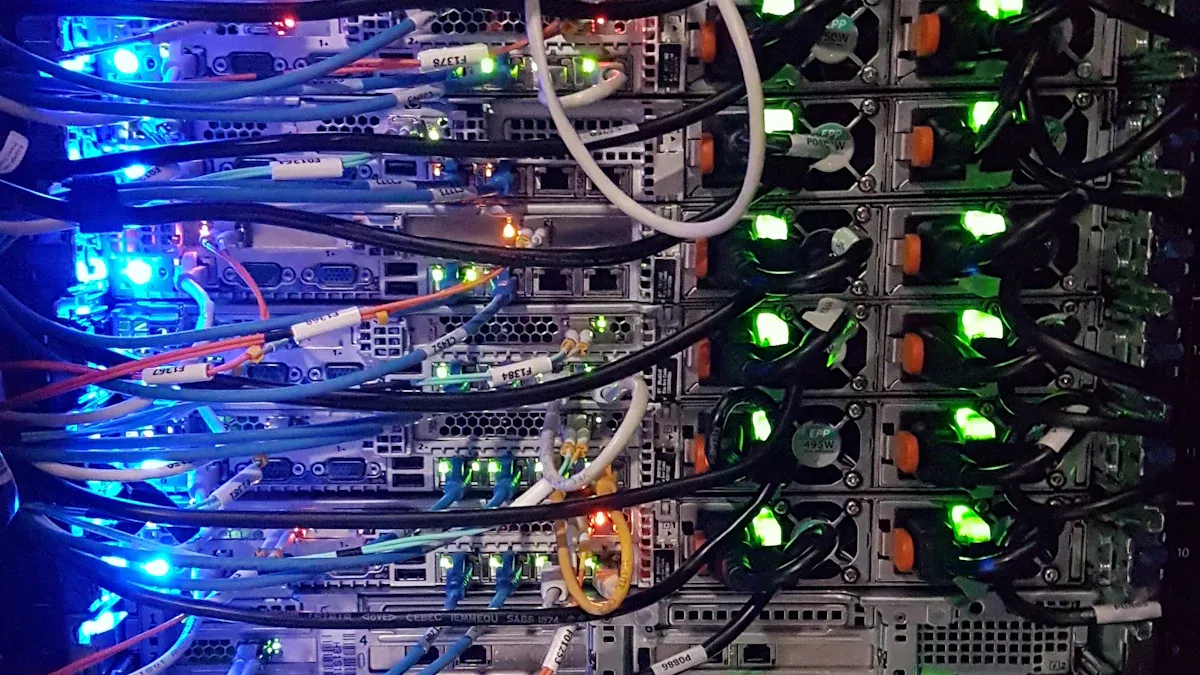
Metered PDUs offer significant advancements over basic models. They provide crucial insights into power consumption, enabling more efficient and reliable data center operations. These intelligent devices move beyond simple power distribution, offering a comprehensive view of power usage.
Enhanced Monitoring with Metered PDU
Metered PDUs serve as a launchpad for real-time remote power metering and rack-based power quality monitoring. They provide the technology needed to enable a smarter IT infrastructure. This allows customers to actively stay ahead of problems before they occur.
Real-Time Data Collection
Real-time data collection is a core feature of metered PDUs. They continuously monitor power usage, providing immediate feedback on electrical loads. This constant stream of information helps administrators make informed decisions about resource allocation and infrastructure upgrades.
PDU-Level Monitoring
PDU-level monitoring tracks the total power consumption of all devices connected to a single metered PDU. This provides a comprehensive view of the power draw for an entire rack or section of equipment. It helps balance loads to prevent overloads and reduces energy waste.
Outlet-Level Monitoring
Some advanced metered PDUs offer outlet-level monitoring. This provides detailed power consumption data at the device or server level. This granular insight is crucial for identifying new opportunities for power growth needs and accurately forecasting future expansion.
Key Metrics Tracked by Metered PDU
Metered PDUs track several key electrical metrics. This detailed information helps manage power effectively and proactively.
Current Amperage
They monitor current levels, reporting load status as normal, warning, or critical. They also issue alerts when thresholds are approached.
Voltage Levels
Metered PDUs track voltage levels. This helps ensure connected equipment receives stable power within acceptable ranges.
Power Consumption (kW)
They measure instantaneous power consumption in kilowatts (kW). This metric helps identify energy-intensive equipment and facilitates optimization measures.
Energy Usage (kWh)
Metered PDUs record accumulated energy usage in kilowatt-hours (kWh). This data is vital for cost management and billing.
Power Factor
They also track the power factor. This indicates how efficiently electrical power converts into useful work.
Benefits of a Metered PDU
Metered PDUs offer numerous benefits. They enhance operational visibility and contribute to a more sustainable IT environment.
Improved Power Efficiency
Metered PDUs, when combined with server consolidation and airflow optimization, can increase data center energy efficiency by up to 20%. They help identify and mitigate energy waste, leading to significant savings.
Proactive Load Management
These devices enable proactive load management. They provide real-time alerts for potential overloads, allowing quick action to distribute power and avoid downtime. This prevents unexpected outages.
Accurate Capacity Planning
Detailed power information, especially when paired with power management solutions, delivers granular data within the cabinet. This capability is vital for predicting rack-level capacity based on measurements of each IT equipment piece. It helps optimize existing setups and supports efficient environments for current and future growth.
Anomaly Detection
Metered PDUs log power events and irregularities. This allows for trend analysis, troubleshooting, and informed power management decisions. They help detect anomalies before they escalate into major problems.
Cost Allocation
By tracking energy usage at the PDU or outlet level, organizations can accurately allocate power costs to specific departments or clients. This transparency improves budgeting and accountability.
Advanced Features of Metered PDU
Metered PDUs extend their utility beyond basic power monitoring, offering advanced features that significantly enhance data center management. These capabilities provide IT professionals with greater control, visibility, and responsiveness.
Local Display Options for Your PDU
Many metered PDUs include local display options, providing immediate access to critical power information directly at the rack. This feature offers convenience and rapid diagnostic capabilities.
On-Device Data Visualization
A small screen on the unit provides immediate visibility of critical data. This allows users to visualize power metrics without needing external software or network access. Operators can quickly review current status and trends.
Immediate Status Checks
Users can quickly identify sudden spikes or dips in readings like voltage, current, and total power draw. This immediate feedback allows for prompt action if anything appears abnormal. Critical data, such as amperages passing through the unit, is available without needing software or network connectivity. This ensures rapid assessment of the power environment.
Remote Access and Management for Metered PDU
Remote access capabilities transform how IT staff manage power distribution. These features enable off-site monitoring and control, improving operational efficiency.
Web Interface Access
Metered PDUs often feature built-in web interfaces. These interfaces allow authorized personnel to access power data and manage settings from any network-connected device. This provides flexibility and reduces the need for physical presence in the data center.
Network Integration
Network integration allows metered PDUs to communicate with existing network management systems. This enables centralized monitoring and control, streamlining power management across multiple racks or data center locations.
Remote control reduces downtime and improves response times during maintenance.
Remote management allows for immediate response, minimizing the need for on-site intervention. This significantly impacts operational efficiency.
| Benefit | Quantifiable Gain |
|---|---|
| Improved maintenance response times (remote monitoring) | 40% |
| Decreased operational downtime (switched PDUs) | ~15% |
| Improved maintenance response times (switched PDUs) | 40% |
Threshold Alerting with Metered PDU
Threshold alerting is a crucial feature for proactive power management. It helps prevent potential issues before they escalate into critical failures.
Customizable Warning Levels
Administrators can set customizable warning levels for various power parameters. These thresholds define acceptable operating ranges for current, voltage, and power consumption. Setting these levels helps identify deviations from normal operation.
Automated Notifications
When power parameters exceed or fall below predefined thresholds, the metered PDU automatically sends notifications. These alerts can go to IT staff via email, SNMP traps, or other communication methods. Automated notifications ensure prompt awareness and allow for timely intervention, preventing potential outages or equipment damage.
Environmental Monitoring Integration for PDU
Metered PDUs often extend their capabilities to include environmental monitoring, providing a holistic view of rack conditions. This integration helps maintain optimal operating environments for critical IT equipment.
Temperature and Humidity Sensors
Advanced rack PDUs incorporate environmental monitoring capabilities, such as temperature and humidity sensors, to maintain optimal conditions within the data center. These sensors protect equipment from overheating and other environmental hazards. Integrated temperature and humidity sensors continuously monitor the environment inside the rack, providing real-time data to facility managers. Maintaining ideal temperature and humidity levels prevents overheating and condensation, common causes of equipment failure. Facility teams utilize this data to adjust cooling systems and airflow, ensuring devices operate within safe parameters. This minimizes the risk of thermal events. Automated alerts from intelligent units notify operations teams when environmental thresholds are exceeded, enabling rapid response to prevent equipment damage or downtime. For example, Eaton’s PDUs, with integrated environmental monitoring, detected a gradual increase in rack temperature due to a blocked airflow vent. An automated alert prompted immediate investigation, allowing facility staff to resolve the issue quickly and prevent potential overheating and unplanned downtime. Supplementing temperature monitors with humidity and dew point sensors allows facility managers to receive real-time notifications if relative humidity or temperature reaches levels that risk condensation. Conversely, excessively low humidity can induce electrostatic charges, damaging sensitive electronic components.
Comprehensive Rack Monitoring
Integrating environmental sensors with metered PDUs creates a comprehensive rack monitoring solution. This combined approach offers a complete picture of both power consumption and environmental conditions within the rack. IT professionals gain insights into how power usage correlates with temperature and humidity fluctuations. This allows for more informed decisions regarding equipment placement, cooling strategies, and overall data center design. Comprehensive monitoring helps identify hot spots, inefficient cooling, or potential risks from static electricity or condensation. By proactively addressing these issues, organizations enhance equipment lifespan, reduce the likelihood of unexpected outages, and optimize energy efficiency. This integrated data stream supports a more resilient and reliable IT infrastructure.
Basic PDU vs. Metered PDU A Direct Comparison
Organizations often face a critical decision when selecting power distribution units for their IT infrastructure. The choice between a basic PDU and a metered PDU significantly impacts operational visibility, efficiency, and long-term costs. This section provides a direct comparison, highlighting the fundamental differences and implications of each type.
Monitoring Capabilities of Each PDU Type
The primary distinction between basic and metered PDUs lies in their ability to provide data about power consumption. This difference affects how IT teams manage and optimize their power infrastructure.
Presence of Data
Basic PDUs are the simplest form of power distribution. They primarily serve to distribute power without offering any data on consumption. They function much like an advanced power strip, delivering electrical power to IT devices without collecting information. In contrast, metered PDUs enhance this by displaying aggregate power consumption of connected devices. These devices offer a full perspective on power usage, accessible both locally at the rack and remotely. They provide crucial information for evaluating energy usage trends.
Granularity of Data
The level of detail in power data varies significantly between the two types. Basic PDUs offer no data granularity; they simply act as an outlet strip. Metered PDUs, however, can provide total PDU consumption, including voltage, current, power, and kWh. They can also offer more granular data obtained by grouping outlets, or even individual outlet monitoring, often accessible via web interfaces. Metered PDUs are available with configurations for unit-level or outlet-level remote monitoring, allowing for a more detailed view of power consumption down to individual devices. They can also trigger alarms when user-defined power thresholds are exceeded.
| PDU Type | Core Functionality | Data Granularity |
|---|---|---|
| Basic PDU | Delivers electrical power to IT devices. | None; acts as an outlet strip. |
| Metered PDU | Delivers electrical power and provides information about power consumption. | Can provide total PDU consumption (voltage, current, power, kWh, etc.) or detailed data for each individual outlet. |
Cost Implications of Your PDU Choice
The initial purchase price and long-term operational expenses differ considerably between basic and metered PDUs. Organizations must consider both aspects for a comprehensive financial assessment.
Initial Investment
Basic PDUs offer a straightforward approach to power distribution. Their simpler design and lack of advanced features result in a lower initial investment. Metered PDUs, with their integrated monitoring capabilities, typically have a higher upfront cost. This higher price reflects the added technology and intelligence they bring to power management.
Long-Term Operational Savings
Despite the higher initial investment, metered PDUs often lead to significant long-term operational savings. These savings are primarily realized through reduced energy costs and decreased downtime, which collectively outweigh the upfront expense. Metered PDUs, especially those with advanced features like outlet-level control and remote management, contribute to improved energy efficiency. They also help reduce downtime by enabling proactive load management and anomaly detection. These long-term benefits are crucial in offsetting the initial investment over time, making them a worthwhile expenditure for many organizations.
Management Complexity of the PDU
The complexity of setting up, configuring, and managing each PDU type also varies, impacting IT staff workload and expertise requirements.
Setup and Configuration
Basic PDUs offer a straightforward approach to power distribution. They can be installed quickly as they do not require complex setup or special training. They have a simple design with multiple outlets and do not require advanced configuration or software updates. This reduces operational complexity in IT setups. Metered PDUs, while providing real-time visibility into power consumption, require more involved setup. They display voltage, current, and total power usage on a clear panel. Some models offer remote monitoring capabilities, which necessitate network configuration. They include integrated current meters for efficient load balancing and overload prevention, which also requires initial setup.
Ongoing Data Analysis
Basic PDUs do not collect any data from connected equipment. This means IT staff do not perform ongoing data analysis for these units. Metered PDUs, however, provide a continuous stream of power data. This data requires ongoing analysis to identify trends, optimize power usage, and plan for future capacity. While metered PDUs have a built-in current meter for local load level monitoring, accumulating historical information is difficult without manual recording. Remote monitoring can be added with a Smart Power Cable, similar to basic PDUs, which then allows for more comprehensive data collection and analysis. This ongoing analysis helps organizations make informed decisions about their power infrastructure.
Operational Benefits of Different PDU
Organizations gain distinct operational advantages from choosing the right power distribution solution. These benefits directly impact efficiency, reliability, and the ability to adapt to future demands.
Efficiency Gains
Metered power distribution units significantly improve power efficiency. They provide real-time data on power usage, enabling users to track energy consumption and optimize efficiency. This distinction makes metered units ideal for environments requiring detailed power management. Kilowatt-hour (kWh) is an important measurement because it determines actual power usage. Ideally, the accuracy should be +/- 1% which is considered “billing-grade” accuracy. Highlighting kWh can drive efficiency efforts. For organizations aiming to improve energy efficiency and reduce operational costs, metered units offer a significant advantage over basic units. Real-time monitoring helps identify inefficiencies and reduce energy waste. Detailed data allows for better planning and resource allocation. This also supports compliance with energy efficiency standards and regulatory requirements.
Risk Mitigation
Metered power distribution units play a crucial role in mitigating operational risks. They provide proactive insights into power conditions, allowing IT teams to address potential issues before they escalate. Real-time monitoring helps prevent overloads by alerting staff when power thresholds are approached or exceeded. This capability reduces the risk of tripped circuit breakers and unexpected downtime. Metered units also enable anomaly detection. They log power events and irregularities, allowing for trend analysis and troubleshooting. This proactive approach minimizes the likelihood of equipment damage and service interruptions. Basic units, lacking these monitoring capabilities, leave organizations vulnerable to reactive problem-solving, which often results in increased downtime and potential data loss.
Scalability and Future-Proofing Your PDU
The choice of power distribution unit also impacts an organization’s ability to scale its infrastructure and meet future demands. Metered units offer distinct advantages in this area.
Adapting to Growth
Metered power distribution units provide the data necessary for accurate capacity planning. As IT infrastructure grows, organizations need to understand their current power consumption and available capacity. Metered units offer granular insights into power usage at the rack or even outlet level. This information allows IT managers to make informed decisions about equipment placement and power allocation. They can efficiently utilize existing power resources and identify when and where infrastructure upgrades are necessary. This data-driven approach ensures smooth adaptation to increasing power demands without over-provisioning or encountering unexpected power limitations.
Meeting Future Demands
Investing in metered power distribution units helps future-proof data center operations. The continuous evolution of technology, including the rise of edge computing and AI workloads, demands more dynamic and efficient power management. Metered units integrate with Data Center Infrastructure Management (DCIM) solutions, providing a centralized platform for monitoring and control. This integration supports automated workflows and enhances overall operational intelligence. Organizations can leverage the detailed power data from metered units to optimize energy consumption, reduce their carbon footprint, and align with green IT initiatives. This strategic investment ensures the power infrastructure remains robust, efficient, and capable of supporting future technological advancements and sustainability goals.
Choosing the Right PDU for Your Needs
Selecting the appropriate power distribution unit for an IT environment involves a careful evaluation of current operational demands, financial considerations, and future growth projections. This decision directly influences efficiency, reliability, and cost-effectiveness.
Assessing Your Current PDU Requirements
Understanding the specific needs of an existing infrastructure is the first step in choosing the right power distribution solution. This assessment involves examining the current setup, power demands, and monitoring priorities.
Existing Infrastructure
The existing IT infrastructure significantly dictates the choice between basic and metered power distribution units. Basic units function as straightforward power distribution devices. They offer no monitoring or switched outlet capabilities. Metered units, a type of intelligent power distribution unit, collect various power metrics. These metrics include voltage, current, active power, apparent power, energy, and power factor. This metering capability allows IT personnel to monitor power input. It helps prevent circuit overloads and understand the power consumption of individual devices. Therefore, if the existing IT infrastructure requires detailed power consumption monitoring, remote data access, and the ability to ensure circuits are not overloaded, metered units are the dictated choice over basic units. The decision between basic and metered units for existing IT infrastructure hinges on the required power management functionality. Metered units specifically measure power consumption. They transmit these metrics over a network connection. This capability is crucial when the IT infrastructure demands detailed insights into power usage. These insights are for optimization, capacity planning, or preventing overloads. The selection is thus driven by the specific power management requirements of the existing setup.
Power Requirements
Accurately determining the power requirements of all connected equipment is crucial. This includes understanding the total power draw of a rack and the individual power consumption of each device. Overlooking these details can lead to overloaded circuits and unexpected downtime. Metered units provide the necessary data to precisely track these requirements. They help ensure that the power infrastructure can safely support all IT assets.
Monitoring Priorities
Organizations must define their monitoring priorities. Some environments only need basic power distribution. Others require granular data for efficiency, capacity planning, or troubleshooting. If real-time data on power consumption, voltage, and current is essential for operational visibility, metered units become indispensable. They offer the insights needed for proactive management and anomaly detection.
Considering Your PDU Budget
Financial considerations play a significant role in the selection process. Organizations must weigh the initial investment against potential long-term savings and operational benefits.
Upfront Costs
Basic power distribution units typically have a lower upfront cost. Their simpler design and lack of advanced features make them a more economical initial purchase. Metered units, with their integrated monitoring and networking capabilities, represent a higher initial investment. This higher price reflects the added intelligence and functionality they provide.
Return on Investment
Despite the higher initial cost, metered units often deliver a substantial return on investment over time. They enable improved power efficiency, which translates into reduced energy bills. Their ability to prevent overloads and facilitate proactive maintenance minimizes costly downtime. Accurate capacity planning, made possible by detailed power data, helps avoid unnecessary infrastructure upgrades. These long-term operational savings and efficiency gains often outweigh the initial expenditure.
Evaluating Future PDU Growth
Anticipating future growth and scalability needs is vital for making a future-proof power distribution choice. The right unit supports expansion without requiring a complete overhaul of the power infrastructure.
Anticipated Expansion
Scalability Requirements
Metered units inherently offer better scalability. They provide the data necessary for informed capacity planning. This allows organizations to efficiently utilize existing power resources and identify when and where infrastructure upgrades are necessary. Their integration with Data Center Infrastructure Management (DCIM) solutions further enhances their scalability. This integration provides a centralized platform for monitoring and control. It supports automated workflows and improves overall operational intelligence.
Data Center Environment and PDU Selection
The data center environment significantly influences the selection of power distribution units. Factors such as rack density and the criticality of applications directly impact the required level of power management and monitoring. Organizations must carefully evaluate these aspects to ensure optimal performance and reliability.
Rack Density
Rack density plays a crucial role in determining the type of power distribution unit a data center needs. As rack densities increase, so does the thermal load within each rack. Traditional data centers typically manage thermal loads of 2-5 kW per rack. Modern data centers often see loads around 10 kW. High-density computing environments, however, can generate 40 kW or more per rack. This increased density necessitates advanced power management solutions.
| Data Center Type | Thermal Load per Rack |
|---|---|
| Traditional | 2-5 kW |
| Modern | 10 kW |
| High-Density Computing | 40 kW or more |
High rack density environments require units capable of gathering live electrical load information. They also need to track abnormal electrical situations. Efficient power management, achieved through units with metering and remote capabilities, leads to reduced energy consumption, lower cooling costs, and decreased downtime. Intelligent units actively monitor the data center environment. They continuously look for threats such as electrical circuit overloads and physical or environmental conditions that could endanger critical IT computing loads. The increasing prevalence of artificial intelligence applications has significantly raised the demand for reliable and efficient power distribution units. High-density intelligent units are engineered to meet the rigorous power requirements of modern AI systems. They ensure optimal performance and uptime through enhanced monitoring and management capabilities.
Criticality of Applications
The criticality of applications running within a data center directly impacts the choice of power distribution units. Mission-critical applications, such as financial transactions, healthcare systems, or essential public services, demand the highest levels of reliability and uptime. For these applications, any power disruption can lead to significant financial losses, data corruption, or even endanger lives. Metered units provide the real-time monitoring and alerting capabilities necessary to proactively manage power. They help prevent outages. They offer granular data, allowing IT teams to identify potential issues before they escalate. This proactive approach ensures continuous operation for vital services. Less critical applications, such as development servers or internal testing environments, may tolerate simpler power distribution solutions. However, even these environments benefit from some level of monitoring to optimize efficiency and prevent unexpected downtime.
Regulatory and Compliance Factors for PDU
Regulatory and compliance factors increasingly influence the selection of power distribution units. Organizations must adhere to various energy efficiency standards and reporting requirements. The right power distribution solution helps meet these obligations.
Energy Efficiency Standards
Governments and industry bodies worldwide establish energy efficiency standards for data centers. These standards aim to reduce energy consumption and environmental impact. Metered units play a vital role in meeting these requirements. They provide the precise data needed to measure and report energy usage. This allows organizations to identify inefficiencies and implement optimization strategies. By accurately tracking power consumption, metered units help demonstrate compliance with energy efficiency mandates. They also support initiatives for reducing carbon footprints. This contributes to a more sustainable IT infrastructure.
Reporting Requirements
Many industries and jurisdictions have strict reporting requirements for energy consumption and operational metrics. Financial institutions, for example, often need detailed records of their IT infrastructure’s power usage for auditing and compliance. Metered units automate the collection of this critical data. They provide comprehensive logs and reports on power consumption, voltage, current, and other relevant metrics. This simplifies the reporting process and ensures accuracy. The ability to generate detailed reports helps organizations meet regulatory obligations. It also provides valuable insights for internal management and strategic planning.
The 2025 PDU Perspective Emerging Trends
Increased Demand for Granular PDU Data
Edge Computing Growth
The accelerating adoption of edge computing drives demand for robust, intelligent PDU solutions. Micro data centers and edge nodes require advanced power distribution units with remote monitoring, environmental sensing, and switching capabilities. These units ensure uninterrupted power supply and efficient load management for critical edge applications. Smart units with IoT integration and predictive maintenance reduce operational risks. Increased data from 5G networks and IoT devices demands scalable power distribution. Organizations prioritize energy efficiency and sustainability, investing in units with granular power monitoring. Regulatory mandates encourage upgrades to modern, intelligent units.
AI and Machine Learning Workloads
Enterprises invest in high-current units for AI initiatives. AI workloads, fueled by deep learning, involve high-density server racks with GPUs. This creates significantly higher power requirements. High-current units deliver reliable power to AI racks, maximizing performance. Monitored units offer granular control, enabling remote power cycling for unresponsive servers. This is critical for AI racks. Switched units provide operational flexibility, especially with automation platforms. Metered units provide accurate power usage measurements. This helps operators track utilization and reduce costs. Demand for precise metering remains strong as AI workloads increase power densities.
Integration with DCIM Solutions for PDU
Centralized Management
Integrating metered units with Data Center Infrastructure Management (DCIM) solutions offers a centralized view of power infrastructure. This simplifies decision-making and improves efficiency. DCIM platforms provide detailed energy usage reports, aiding sustainability and compliance. Real-time insights help detect irregularities and prevent critical problems.
Automated Workflows
DCIM integration enables remote management, reducing on-site interventions and ensuring faster responses. Organizations optimize energy usage and reduce costs by identifying inefficiencies. Proactive alerts for threshold breaches prevent downtime and equipment damage. Enhanced reliability results from real-time and historical power usage data.
Sustainability and Energy Efficiency with PDU
Carbon Footprint Reduction
Rack units play a critical role in reducing carbon footprints. They provide enhanced energy management, allowing data centers to optimize power usage and reduce costs. Smart units contribute through reduced carbon emissions and improved energy efficiency. They help meet energy efficiency standards like ISO/IEC 30134 and ANSI/BICSI 002-2014, which use metrics like PUE. Advanced units optimize power usage for IT equipment and cooling. Monitored units track energy consumption at the outlet level, helping right-size infrastructure and reduce waste. Modern units can cut CO₂ emissions by up to 30%.
Green IT Initiatives
Smart units support environmentally sustainable operations. IoT and analytics integration improve fault detection, enable predictive maintenance, and enhance efficiency. Many modern units integrate with renewable energy sources like solar. This aligns with green data center initiatives. Intelligent unit systems with real-time monitoring help data centers meet regulatory standards and sustainability goals. They enable precise power measurement and control. Advanced units support compliance with PUE Level 2 and Level 3 measurement standards.
Enhanced Security Features for Your PDU
Modern data centers increasingly rely on metered power distribution units for critical operational insights. Securing these devices and their collected data becomes paramount. Robust security features protect against unauthorized access, data manipulation, and potential cyber threats. These safeguards ensure the reliability and trustworthiness of power management systems.
Remote Access Protection
Remote access to metered units offers significant operational advantages. However, it also introduces potential security vulnerabilities. Organizations implement several critical features to protect these access points. A configurable firewall restricts unauthorized network traffic. This firewall acts as a barrier against external threats. Strong passwords are a fundamental defense. They prevent brute-force attacks and unauthorized logins. Role-based access control further enhances security. It grants users only the necessary permissions for their specific tasks. This limits potential damage from compromised accounts. Encrypted communication protocols, such as HTTPS or SSH, secure data transmission between the user and the metered unit. This prevents eavesdropping and data interception. Network isolation segments the metered units from less secure networks. This reduces their exposure to broader network threats. Modern firewalls, regularly updated, provide advanced threat detection and prevention capabilities. Patch management ensures all software and firmware on the metered units remain current. This addresses known vulnerabilities. Credential hardening practices, like multi-factor authentication, add another layer of protection to user accounts. These measures collectively safeguard remote access, maintaining the integrity of power management operations.
Data Integrity
Maintaining data integrity is crucial for effective power management. Metered units collect vast amounts of power consumption data. This data informs critical decisions regarding capacity planning, efficiency optimization, and anomaly detection. Ensuring the accuracy and reliability of this information is vital. Secure logging mechanisms record all events and changes within the metered unit. This creates an audit trail for accountability and troubleshooting. Tamper detection features alert administrators to any unauthorized attempts to alter the unit’s configuration or data. Data encryption protects stored and transmitted power data. This prevents unauthorized parties from accessing or manipulating sensitive operational information. These robust data integrity measures ensure that IT professionals can trust the insights derived from their power monitoring systems. This confidence supports informed decision-making and maintains the overall security posture of the data center.
Choosing the right power distribution unit involves balancing current operational needs with anticipated future demands. Metered units provide crucial benefits for today’s data-driven environments. They offer enhanced monitoring and management capabilities. A strategic selection ensures efficiency, enhances reliability, and supports future expansion. Organizations must carefully evaluate their infrastructure to make an informed decision.
FAQ
What is the primary distinction between a basic PDU and a metered PDU?
A basic PDU distributes power to IT equipment. It does not offer any monitoring capabilities. A metered PDU, conversely, distributes power and provides real-time data on power consumption. This allows for enhanced management and efficiency insights.
When should an organization opt for a basic PDU?
Organizations should choose a basic PDU for small IT closets or non-critical infrastructure. They are also ideal for budget-constrained environments. Basic PDUs offer cost-effective power distribution without advanced monitoring needs.
What are the main advantages of using a metered PDU?
Metered PDUs offer improved power efficiency and proactive load management. They also provide accurate capacity planning and anomaly detection. These features contribute to greater operational reliability and cost savings.
Can metered PDUs help improve energy efficiency in data centers?
Yes, metered PDUs significantly enhance energy efficiency. They provide granular data on power consumption. This allows organizations to identify inefficiencies and optimize power usage. This leads to reduced energy waste and lower operational costs.
Do metered PDUs support remote access and management?
Many metered PDUs offer remote access through web interfaces and network integration. This allows IT staff to monitor power data and manage settings from off-site locations. Remote capabilities improve operational efficiency and response times.
Why is data granularity important in PDU selection?
Data granularity provides detailed insights into power consumption at the PDU or even outlet level. This information is crucial for accurate capacity planning, identifying high-energy devices, and optimizing resource allocation. It supports informed decision-making.
How do PDUs contribute to sustainability and green IT initiatives?
Metered PDUs play a vital role in sustainability. They enable precise power monitoring, which helps reduce carbon footprints and optimize energy usage. This aligns with green IT initiatives and supports compliance with energy efficiency standards.
